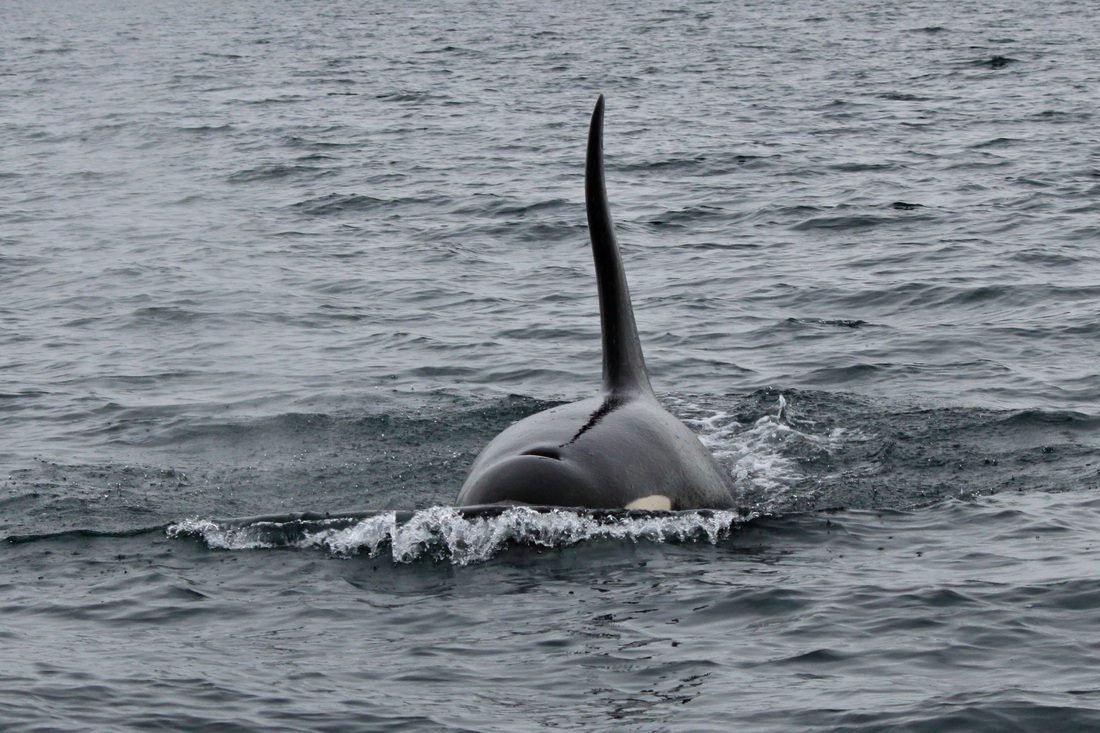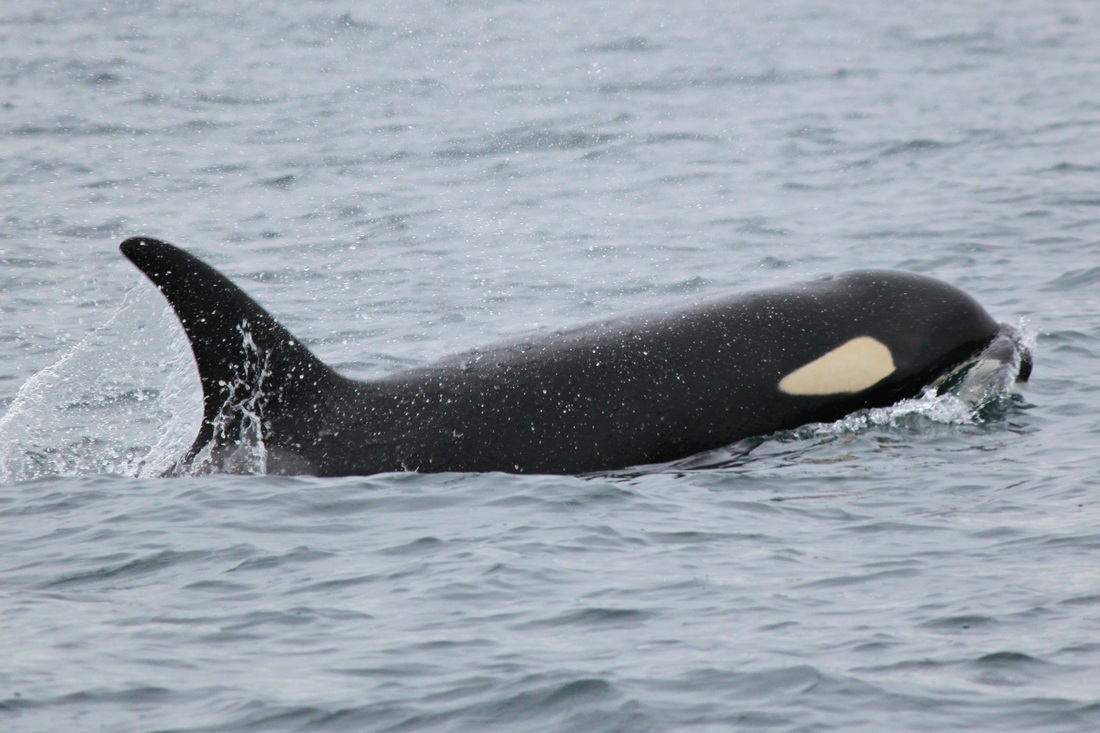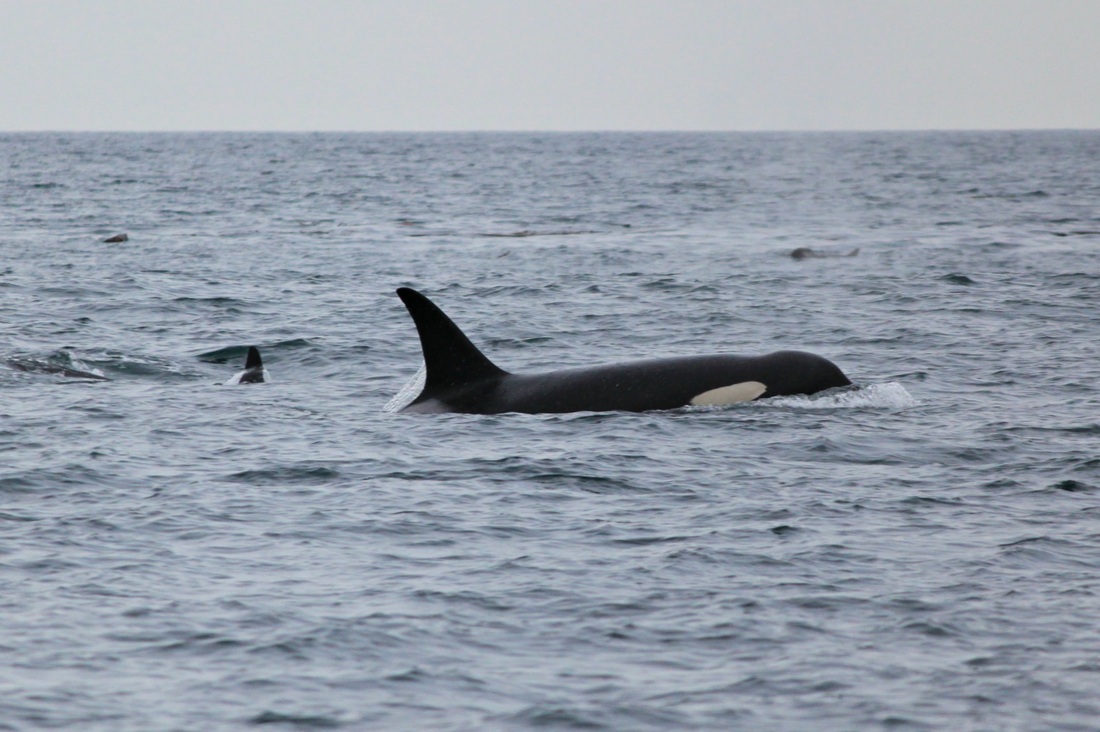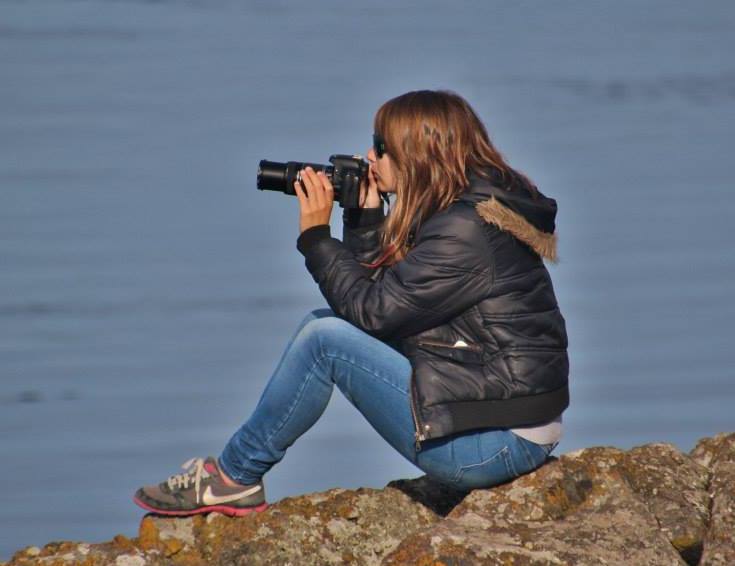Once past Smith Island, we went to Partridge Bank and Dungeness Spit near the opening of Admiralty Inlet. The day before, the Southern Resident orcas (possibly members from J, K, and L) had exited the same inlet as they headed for the open ocean. There was no sign of them now though, so we headed West in the Strait of Juan De Fuca, the route the orcas would have taken to get to the open ocean. The Strait of Juan De Fuca is a very large area to cover and can have some choppy water. Luckily, there were just low, well spaced rollers on this day.
Out in the middle of the strait between Port Angeles and Race Rocks it seemed that we were not going to find any cetaceans what so ever. Then, I looked off to our right and was quite surprised to see orcas!! Two males were surfacing far off in the distance, their tall dorsal fins much easier to spot compared to the females and juveniles. The mist from their exhales rose up into the air and slowly dissolved. We turned the boat and gradually motored over to them. At first I thought we were with marine mammal eating Transient orcas. The orcas were taking long deep dives and it seemed like there were only a handful of them. Then Sequim K12 and her son, Rainshadow K37, surfaced off our bow and we had our answer. It was K pod!
We traveled along with the orcas as they generally continued West with some occasional zigzagging. At one point, all nine orcas came together for a bit, then split back up and became even more spread out than before. We decided to stick with Lea K14 and her son Kelp K42. Lea's other son, Lobo K26, was back behind them. As Lea and Kelp came up on a large patch of drifting logs and detached seaweed, Kelp spy hopped. The two then appeared to play with something in the patch for a moment before swimming on their way. Towards the end of the encounter, Lobo joined back up his mother and younger brother. With limited sunlight, it was time to head back home. They were still heading West when we left the scene. I am happy to report that we saw every member of the matrilines we did locate (the K12's, K14's, K22's). I wonder now if more of the Residents were further ahead of our K's. Maybe the K13's were up there, or perhaps J and L pod. What a great find way out West!!
Please don't use my photos without my permission, just ask!




